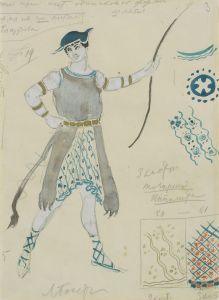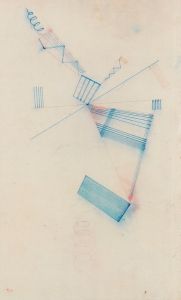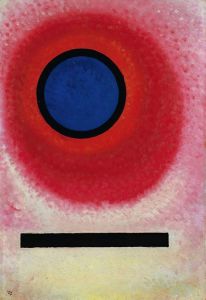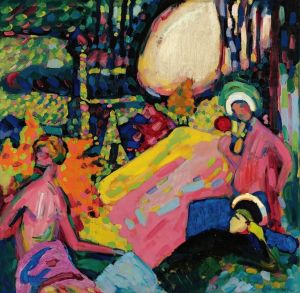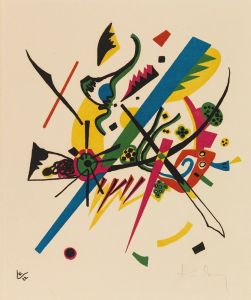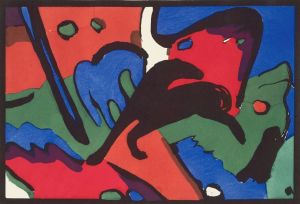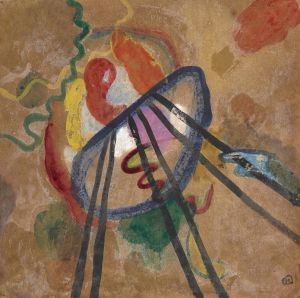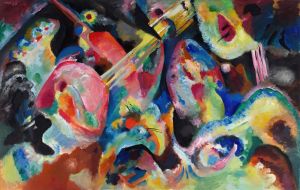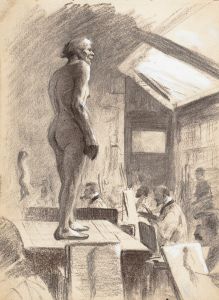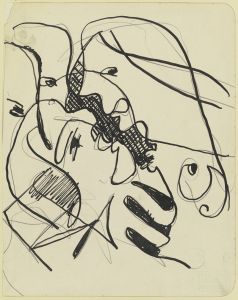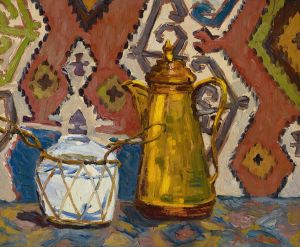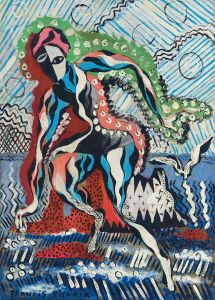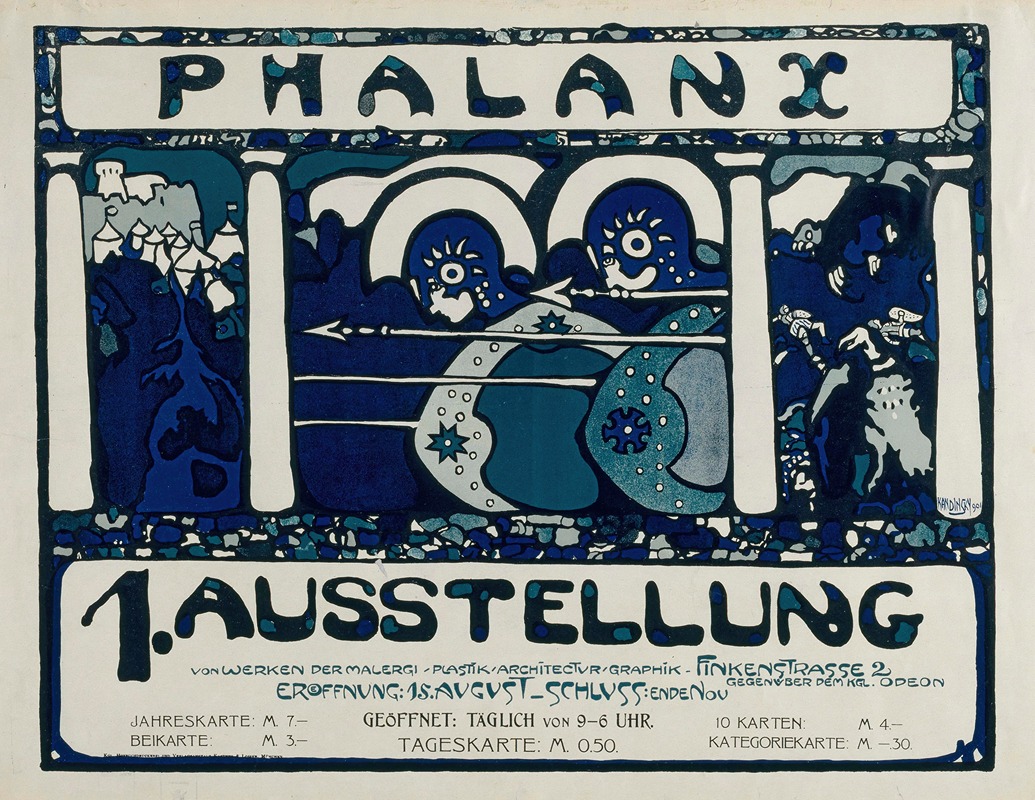
Plakat für die erste Ausstellung der Phalanx
A hand-painted replica of Wassily Kandinsky’s masterpiece Plakat für die erste Ausstellung der Phalanx, meticulously crafted by professional artists to capture the true essence of the original. Each piece is created with museum-quality canvas and rare mineral pigments, carefully painted by experienced artists with delicate brushstrokes and rich, layered colors to perfectly recreate the texture of the original artwork. Unlike machine-printed reproductions, this hand-painted version brings the painting to life, infused with the artist’s emotions and skill in every stroke. Whether for personal collection or home decoration, it instantly elevates the artistic atmosphere of any space.
Wassily Kandinsky's Plakat für die erste Ausstellung der Phalanx (Poster for the First Exhibition of the Phalanx) is a lithographic work created in 1901. This piece served as the promotional poster for the inaugural exhibition of the Phalanx art group, which Kandinsky co-founded in Munich, Germany. The Phalanx group was established as a collective of artists who sought to challenge the traditional academic art norms of the time and promote modernist approaches to art. Kandinsky, who was deeply involved in the group's activities, played a central role in organizing its exhibitions and designing its visual identity.
The poster reflects Kandinsky's early artistic style, which was influenced by Art Nouveau and Symbolism. It features a stylized depiction of a woman holding a sword, surrounded by flowing, organic lines and decorative elements. The figure is thought to symbolize strength and artistic innovation, aligning with the Phalanx group's mission to break away from conventional artistic practices. The composition demonstrates Kandinsky's interest in combining figurative elements with abstract, ornamental forms, a precursor to his later development as a pioneer of abstract art.
The Phalanx group held several exhibitions between 1901 and 1904, showcasing works by both its members and international artists. Although the group disbanded after a few years, its activities marked an important period in Kandinsky's artistic development. During this time, he began experimenting with color, form, and composition, laying the groundwork for his later contributions to abstract art.
The Plakat für die erste Ausstellung der Phalanx is significant not only as a piece of graphic design but also as a historical artifact that provides insight into Kandinsky's early career and the artistic movements of the early 20th century. Today, the poster is recognized as an important example of Kandinsky's work prior to his transition into abstraction. It is often studied in the context of his broader artistic evolution and the cultural environment of Munich at the turn of the century.





